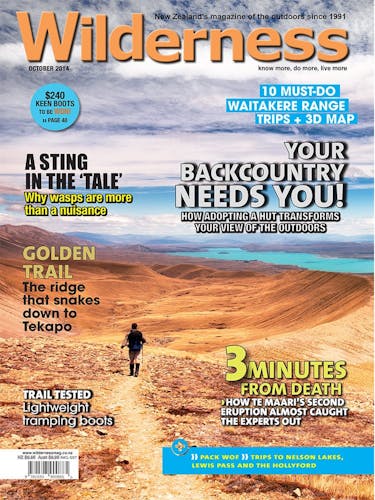Three places to see the prickly menace known as speargrass
In February 1845, missionary explorer William Colenso and his Maori companions emerged onto the tops of the Ruahine Range. For a botanist like Colenso, the alpine flora was a delight and he soon began collecting many specimens.
But he didn’t greet all plants with enthusiasm. On a narrow section of the ridge, Colenso’s party faced the spear-sharp leaves of the speargrass or spaniard. He wrote: ‘we put our feet warily as possible on some tolerably clear spot between them, [but] were often caught on all sides as if in a man-trap, and not unfrequently roared pretty loudly from the pain’.
Many a tramper has cursed speargrass just as vociferously as the needle-sharp leaves can penetrate even the thickest canvas gaiter. Speargrass is part of the carrot family, which perhaps explains why hares like to nibble them.
Botanists recognise about 38 species in the genus Aciphylla, most of which are endemic to New Zealand. While I doubt any trampers would plan a trip to specifically to seek out spaniards, they are so prominent and widespread that they add much colour and texture to our alpine vegetation – especially during the summer months when the flower stalks form spectacular displays.
1. Southern Crossing, Tararua Forest Park
Tararua speargrass, Aciphylla dissecta, is one of the most benign of speargrasses, with leaves so small and soft that it barely deserves the name. In fact, you might mistake it for a bristly carrot (Anisotome) at first glance. It occurs only in the Tararua Range, with many clumps of it growing beside the Southern Crossing track.
2. Victoria Range, West Coast
Wild Spaniard, Aciphylla colensoi, is one of the most widespread of our Aciphylla species and was named after William Colenso. It occurs in most mountain areas between East Cape and Canterbury. The Victoria Range boasts large areas of it, sometimes hidden among granite boulder fields, which can make travel on these remote tops a real obstacle course.
3. Rees-Dart Track, Mt Aspiring National Park
As its name suggests, giant speargrass (Aciphylla scott-thomsonii) is the largest of our spaniard species. With leaves up to a metre long, and a huge flowering stalk which can reach a height of four metres, these plants fairly bristle with spiky defences. Fortunately, their size makes them easy to spot and avoid! Preferring wetter areas, giant speargrass grows in the eastern Southern Alps, from Arthur’s Pass south. Patches of them in the Rees and Dart Valleys can be admired from the safety of the track.







